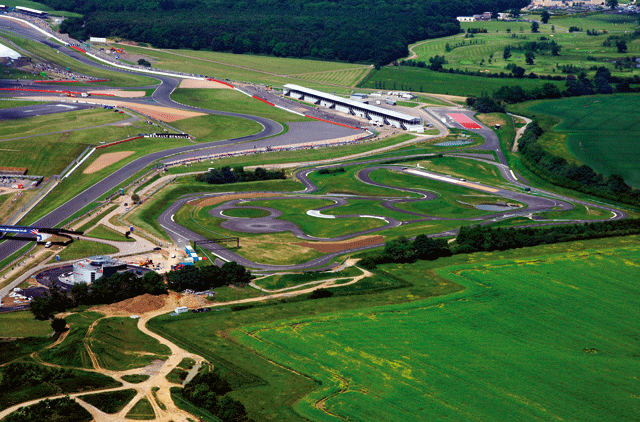
Sixty years ago, Silverstone was the birthplace of FIA Formula 1 World Championship. Today, it's still one of the most historic and challenging tracks in the world. But did you know it began life as an airfield?
During the Second World War, a Royal Air Force bomber station, the RAF Silverstone, opened in Northamptonshire in 1943. By the time the war ended in 1945, Britain had many redundant airfields. What could be done with Silverstone's long, flat, straight runway? The Royal Automobile Club (RAC) had an idea.
It contacted the Air Ministry requesting to use it as a circuit for racing, and a lease was agreed. A farm, producing cereal crops, sat bang in the middle of the airfield. The RAC employed farmer James Wilson Brown to create the first Grand Prix circuit at the site. On October 2, 1948, Silverstone's first official event took place — the RAC Grand Prix. Driving a Maserati, Luigi Villoresi was the winner, recording an average speed of 115kph. He took home £500.
In 1950, the first ever World Championship GP was won by Giuseppe Farina whose Alfa Romeo team dominated proceedings. The Italian manufacturer cruised to a 1-2-3 finish.
The following year, the British GP was won here by Argentinian driver Froilan Gonzalez behind the wheel of a Ferrari. It was the team's first victory in the World Championship.
Silverstone's lease changed hands in 1951 when the British Racing Drivers' Club took over from the RAC. Between 1955 and 1964 the Grand Prix was shared between Silverstone, Aintree and Brands Hatch. The British GP was now a main event, as big as the FA Cup Final and Grand National.
By 1966, business was thriving and so the BRDC formed Silverstone Circuits Ltd to look after all the commercial activities. More improvements came during the Seventies which included a new pits complex with 44 garages while efforts to reduce speed at the famous Woodcote Corner were made. It had become motor racing's best known high-speed corner, taken flat-out in top gear by the bravest drivers, but many felt it was a little too dangerous. Drastic changes were made in 1987 and Woodcote's S-bend chicane was replaced by a sharp left-right bend. 40 large garages were built and an all-new press centre was completed. Over £1 million was spent.
In 1991, the new Becketts sequence, Vale link between Stowe and Club, the Bridge Bend and loop at Priory were given the thumbs up by both fans and drivers alike. Nigel Mansell took back-to-back victories for Williams in 1991 and 1992, the new layout obviously to his liking.
Then, tragedy struck as F1 lost its favourite son. Ayrton Senna crashed at Imola and as a result, circuits all around the world underwent major revisions to make them safer. Silverstone's entry from Hangar Straight into Stowe Corner was modified in 1995 and the flat-out Abbey kink was changed to a chicane.
In 2007, a £25 million redevelopment of the circuit was announced and a new pit and paddock complex is due for completion by 2011.
It may look different from those formative years, but the essence of Silverstone remains unchanged. It's still a fast, challenging track which drivers love and it provides racing fans with more thrills than they can handle.
Legends - leg·ends \'le-j nds\ -noun Myths, folklores, marvels and wonders of the most storied culture of all — car culture
FACTS
Location Silverstone, Northamptonshire, England
Length 5,901km
Race Laps 60
First Grand Prix 1948
First winner Luigi Villoresi (Maserati)
Fascinating fact
Keke Rosberg, father of current Mercedes driver Nico, drove his Williams at an average of 257kph to claim pole in 1985, making Silverstone the world's fastest circuit at the time. It later emerged he had a slow puncture.










